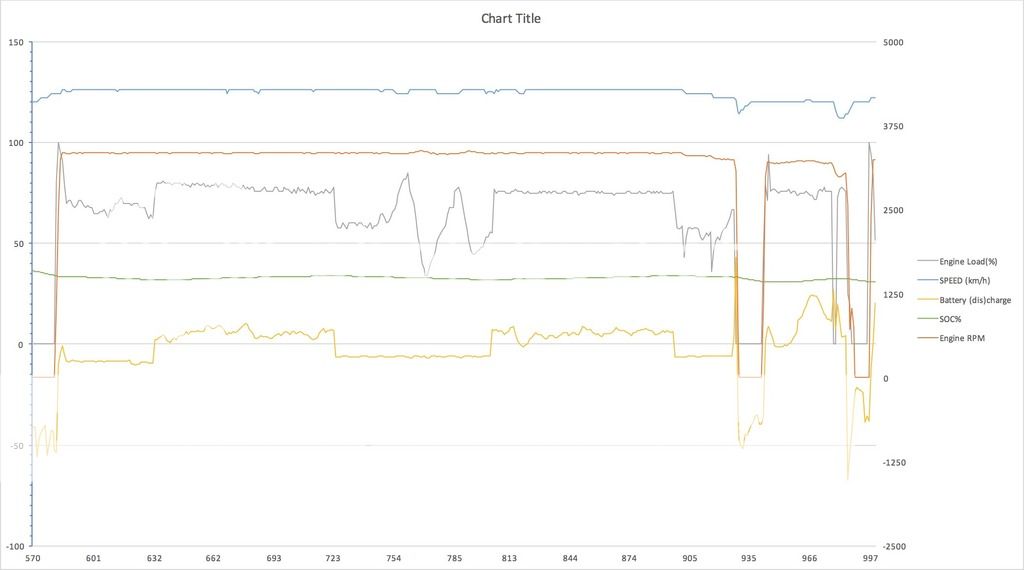Trex said:
As for the rest of your post let me put it this way. I hate the grid charge. :lol: and get rid of it straight away even on the highway if I am taking measurements. But mainly for the reason I stated here in another topic:
"I find I cannot take accurate measurements while ever the grid charge is in my Phev . Again how are we ever going to compare figures if we do not have a level playing field?. I can hear you saying "ok but I will press save and then reset the fuel computer" but I found out nearly 18 months ago (never touch the save button now) even then the SOC can drift which can affect my results. Or I forgot to note my measurement before using some more of the grid charge."
It gets worse :mrgreen: Wanted to know difference in MPG while towing with charged and depleted battery. I did realise that while towing, a charged battery would slip, even when running charge mode. And MPG would therefor be flattered. But I hoped that MPG on a depleted battery would still prove better than that. What I saw was that even when running in normal mode, SOC can still slip without you knowing it:
While towing, I disengaged Charge mode and waited for the engine to kick in again. Then I reset the board computer. Indeed, MPG was better than before, but SOC dropped from 30-ish to sometimes as low as 24% :lol: Believe me, without proper instrumentation, you would never know, as my engine never 'raced'. I should have reset my BC at 24% sort so.






























